
Guests
- Larry Lohmannauthor of the book Carbon Trading: A Critical Conversation on Climate Change, Privatization and Power. He works at the British NGO The Corner House.
- Frank Ackermanan economist at the Stockholm Environment Institute and author of Can We Afford the Future?: The Economics of a Warming World.
Will the expansion of carbon emissions trading help stop global warming or just create a new market for Wall Street to make billions? We air excerpts of Annie Leonard’s The Story of Cap and Trade and speak with Larry Lohmann and Frank Ackerman. [includes rush transcript]
Transcript
AMY GOODMAN: At the heart of the Obama administration’s effort to reduce US greenhouse gas emissions is a market-based system to trade carbon. Known as a “cap and trade,” the system sets carbon emissions limits of companies and doles out allowances that can be bought and sold to meet the emission targets.
In Washington, the House approved a cap-and-trade system earlier this year as part of the Waxman-Markey bill. The Senate is considering adopting a similar provision in the Boxer-Kerry bill.
But the issue of cap and trade has split the environmental and progressive movements. Last week in the pages of the New York Times, NASA scientist James Hansen published a piece called “Cap and Fade.” He argued carbon trading will do little to slow global warming or reduce our dependence on fossil fuels. Hansen went on to say cap and trade will allow polluters and Wall Street traders to fleece the public out of billions of dollars. Nobel Prize-winning economist Paul Krugman responded by describing cap and trade as the only form of action we have to take against greenhouse gas emissions before catastrophe becomes inevitable.
In a moment, we’ll host a debate on the subject. But first I want to turn to a new animated film that premiered here in Copenhagen, or at least it was played here. It’s called The Story of Cap and Trade
. It’s directed by Annie Leonard, who’s best known for her web video The Story of Stuff.
ANNIE LEONARD: So how does cap and trade work? Well, pretty much all serious scientists agree that we need to reduce the amount of carbon in the atmosphere to 350 parts per million, if we want to avoid climate disaster. In the US, that means reducing our emissions by 80 percent, maybe even more, by 2050. Eighty percent?
Now, the problem is that most of our global economy runs on burning fossil fuels, which releases carbon: the factories that make all our stuff, the ships and trucks that carry it around the world, our cars and buildings and appliances, and just about everything. So how are we going to reduce carbon 80 percent and not go back to living like Little House on the Prairie?
Well, these cap-and-trade guys are saying that a new carbon stock market is the best way to get it done. The first step would be getting governments around the world to agree on a yearly limit on carbon emissions. That’s the cap. I think that part is great.
So, how do they want to ensure that carbon emissions stay under the cap? Well, governments would distribute a certain amount of permits to pollute. Every year, there would be fewer and fewer permits, as we follow the cap to our goal. Innovative companies will get on board building clean alternatives and getting more efficient.
As permits get scarcer, they would also become more valuable. So, naturally, companies who have extra will want to sell them to companies who need them. That’s where the trading comes in.
The logic is that as long as we stay under the cap, it doesn’t matter who pollutes and who innovates. We’ll meet our climate deadline, avoiding catastrophe, and, oh, yeah, these guys take their fee as they broker this multi-trillion-dollar carbon racket — I mean, market — save the planet, get rich. What’s not to like?
Some of my friends who really care about our future support cap and trade. A lot of environmental groups that I respect do, too. They know it’s not a perfect solution, and they don’t love the idea of turning our planet’s future over to these guys, but they think it’s an important first step and that it’s better than nothing. I’m not so sure. And I’m not the only one.
AMY GOODMAN: An excerpt from the online short, The Story of Cap and Trade by Annie Leonard. We’ll link to the full video on our website.
We’re joined now by two guests. Larry Lohmann is the author of the book Carbon Trading: A Critical Conversation on Climate Change, Privatization and Power. He works at the British non-governmental organization, NGO, called The Corner House. We’re also joined by Frank Ackerman. He’s an economist at the Stockholm Environment Institute. He’s part of Tufts University, author of Can We Afford the Future?: [The] Economics [of] a Warming World.
The Story of Cap and Trade that Annie Leonard did is very critical of cap and trade. Professor Leonard, you are for cap and trade — or Professor Ackerman, you’re for cap and trade. Explain why, and do it in basic terms.
FRANK ACKERMAN: Sure.
AMY GOODMAN: You’re used to teaching students.
FRANK ACKERMAN: No, no, I’m —-
AMY GOODMAN: Think of us as all your students.
FRANK ACKERMAN: I’m not exactly for it. I don’t think either Hansen or Krugman got it right. I don’t think it’s necessarily a bad thing. It’s certainly not the only thing that we need. There’s undoubtedly a role for having a price on carbon, which can be done either through a tax or through cap and trade.
The big mistake in this debate, I think, is to pretend that a price on carbon is all that we need. Any time a price incentive like this has worked, it has needed many, many other things to be working with it. The image of a level playing field that economists sometimes suggest is exactly wrong. We need to be doing everything we can to tilt the playing field in the direction we want it to go. Then a price, either through cap and trade or through a tax, might actually make it a little easier. But no chance at all it’ll do the job alone.
AMY GOODMAN: Larry Lohmann, you’re opposed to cap and trade, so you feel strongly about this. Why?
LARRY LOHMANN: For some of the same reasons, actually, that Frank was referring to. I agree completely with Frank that there is no magic bullet in terms of a carbon price which is going to solve the climate problem.
What we need is massive reinvestment away from fossil fuels, putting subsidies -— instead of putting subsidies into fossil fuels, putting them into renewable energy. We need to overcome our addiction to fossil fuels in industrialized societies.
And the problem with cap and trade is, is that it stands in the way of doing that, in many ways. It’s a way of providing pollution rights to some of the worst polluters, so that they can delay the kind of structural change that’s necessary.
AMY GOODMAN: Explain how that works.
LARRY LOHMANN: Well, it happens in — it happens in a number of ways. First of all, the cap and trade proper is a system by which those who are unable or do not want to reinvest in the long term away from fossil fuels — I’m talking about big industries like electricity generators highly dependent on fossil fuels, chemicals, steel, cement, and so forth — instead of investing in structural change away from their dependence on fossil fuels, they can simply buy pollution credits or pollution rights from other sources.
Now, there are two sources, two sources of pollution rights they can buy to keep doing business as usual. One of those sources is to buy pollution rights from other companies in the same country who have reduced their emissions beyond, beyond the requirements, and they have extra pollution rights to sell. Another and very dangerous source of pollution rights that they can buy in order to continue business as usual is from so-called carbon offset projects instituted abroad. For example, you might invest in a tree plantation, which supposedly absorbs your pollution abroad, and that enables you to continue business as usual. The problem with this is that it enables industrialized countries to continue their addiction to fossil fuels.
AMY GOODMAN: I wanted to go to this issue of carbon offsets and then get Frank Ackerman’s response and play another clip from Annie Leonard’s online video called The Story of Cap and Trade.
ANNIE LEONARD: Devil number two is called offsetting. Offset permits are created when a company supposedly removes or reduces carbon. They then get a permit, which can be sold to a polluter who wants permission to emit more carbon. In theory, one activity offsets the other.
The danger with offsets is it’s very hard to guarantee that real carbon is being removed to create the permit, yet these permits are worth real money. This creates a very dangerous incentive to create false offsets, to cheat. Now, in some cases, cheating isn’t the end of the world. But in this case, it is.
And already there’s a lot of cheating going on, like in Indonesia, Sinar Mas Corporation cut down indigenous forests, causing major ecological and cultural destruction. Then they took the wasteland they created and planted palm oil trees. Guess what they can get for it. Yep, offset permits. Carbon out? No. Carbon in? You bet.
Companies can even earn offsets for not doing anything at all, like operators of a polluting factory can claim they were planning to expand 200 percent, but reduce the plans to expand only 100 percent. For that meaningless claim, they get offset permits, permits that they can sell to someone else to make more pollution. That is so stupid.
The list of scams go on and on, and many of the worst ones happen in the so-called third world, where big business does whatever it wants to whomever it wants. And with lax standards and regulations on offsets, they can get permits for just about anything.
AMY GOODMAN: That is Annie Leonard’s Story of Cap and Trade. Frank Ackerman, are you concerned about this?
FRANK ACKERMAN: Sure. I think any policy can be done well or badly, and there’s plenty of reason to worry about the US doing things badly in this area. The three things I can think of you could do wrong with cap and trade is you could give a fixed cap that doesn’t go down — that was the problem with the sulfur emissions cap and trade in the ’90s, that there was a fixed cap guaranteed forever instead of a declining cap —-
AMY GOODMAN: And that was particularly related to acid rain.
FRANK ACKERMAN: Exactly. That was the poster child for the success of cap and trade. It’s always quoted. That was a big mistake in that case. That’s the one mistake that I think we have made progress on, that the Waxman-Markey, all those bills, have a declining cap.
Problem number two, where we don’t get nearly as good a grade, is giving away the allowances to the incumbent polluters. If you give away allowances to the companies which are already emitting pollution, you give a huge transfer of wealth to the people who were already causing the problem. The sulfur trading in the ’90s did that. Waxman-Markey mostly does that, with sort of gradually phasing it out. The much superior alternative of auctioning the permits so that the money returns to the public to be used for environmental purposes, for income redistribution, for whatever, is what’s been advocated, the Cantwell bill that was mentioned earlier -—
AMY GOODMAN: Which is sort of being called “cap and dividend.”
FRANK ACKERMAN: Yeah, the cap-and-dividend idea returns the money to the taxpayers, rather than giving it to the original polluters. So Waxman-Markey and those bills start out giving most of it to polluters, with a promise that it will gradually decline.
And the third big problem is the offsets. That has happened. What that film described has happened with a lot of offsets. On the other hand, if they were verified, if you actually did honestly prove that somebody else had reduced carbon somewhere else, what’s wrong with that? Carbon is completely fungible. It’s the same commodity. You emit carbon in Brazil, Bangladesh, Boston, it doesn’t matter; it’s the same carbon in the atmosphere. So if you can confirm that you honestly did reduce it in Brazil or Bangladesh or Boston, it’s the same reduction. The question of dishonesty in the offsets is obviously a real problem.
AMY GOODMAN: Larry Lohmann, what about that?
LARRY LOHMANN: I agree it’s — I agree that dishonesty is rife throughout the carbon offset market. I mean, our experience in the Durban Group for Climate Justice in studying dozens of these carbon offset projects around the world, in countries like Uganda, India, Indonesia, Philippines, Brazil, and so forth, is that this is just a universal aspect of carbon offset —- carbon offset projects.
I think the problem goes a bit deeper, though. And that is that, actually, it’s not possible to distinguish between fraud and non-fraud in this market. It’s not possible to prove that you’re actually saving carbon. I mean, the example from Annie Leonard’s film, I think, shows this, where the factory owner simply says, “Well, I was planning on expanding 200 percent, but now I’m telling you that I’m going to expand only 100 percent, and therefore I’m saving 100 percent. Therefore, I should be allowed to sell pollution rights to the industrialized countries in the North, so that they can continue business as usual.” Obviously there’s no way of verifying the claim of the factory owner, whether that was going to be business as usual or not. The consultants who come into this system to make that claim actually can say pretty much anything they want to and claim that they’re making any carbon savings they want to. So I would go a little bit further than Frank in saying that the system is not only open to abuse, the abuses cannot be corrected, even in principle.
AMY GOODMAN: I wanted to ask you, Larry Lohmann, about a figure that’s being thrown around here, 17 percent, that the US is pushing for, a 17 percent reduction in greenhouse gas emissions. Explain.
LARRY LOHMANN: Well, I think that that claim has been flying around, but there are two really misleading things about that claim. First of all, under the Kyoto Protocol, for example, emissions reductions are generally reckoned from 1990 levels. So, under the Kyoto Protocol -—
AMY GOODMAN: So, for the rest of the world, they’re using 1990 standards.
LARRY LOHMANN: That’s the conventional baseline here. So, you know, the question is, you know, by 2020, how much are you reducing from your 1990 levels? The US is being a little slippery by saying, “OK, well, actually, we’re reducing 17 percent.” But what they don’t mention is they’re reducing that from, not 1990 levels, but from 2005 levels.
AMY GOODMAN: And, Frank Ackerman, the equivalent in 1990 terms of 17 percent?
FRANK ACKERMAN: I think it’s something like four percent.
AMY GOODMAN: So it’s actually four percent. And Larry Lohmann, is it actually even cutting four percent?
LARRY LOHMANN: No, it’s actually worse than that. Even the four percent figure is misleading, because that four — those four percent of reductions probably would not be made within the United States itself. In other words, the fossil fuel polluters in the United States would continue business as usual. What they would do instead would be buy pollution rights from outside the country, from these carbon offset projects outside the country. I think the International Rivers organization in Berkeley has calculated that, actually, under the Waxman-Markey bill, the US would not have to reduce its own fossil fuel emissions until 2026 under the Waxman-Markey provisions.
AMY GOODMAN: Frank Ackerman?
FRANK ACKERMAN: I think there are all kinds of things that ought to be fixed, that certainly offsets should be limited, but the problem is that the debate about setting a price on carbon has been set up as cap and trade versus tax. And we’ve had thirty years of teaching Americans to froth at the mouth when taxes are mentioned. And so, there’s no chance whatsoever that a carbon tax will be passed. I think some of the big companies that are advocating a carbon tax are probably conscious of that and doing it with dishonest intent in the attempt to destroy the entire idea of climate legislation. From that, I deduce that, sadly enough, we’ll have to figure out how to patch up the holes in cap and trade, of which there are many. There are a lot of things to patch up.
AMY GOODMAN: What if the carbon market collapses?
FRANK ACKERMAN: I could tell the world how to reduce carbon emissions. People seem even more allergic to the idea of command and control. The problem is not describing how to reduce American carbon emissions; the problem is creating incentives that will make people feel like they have been allowed to do it in a free market way. It’s the inefficiency of making this all happen through the market, rather than simply saying we’re not going to drive cars like that, we’re not going to waste electricity like that. It would be very easy to tell people how to reduce emissions. But if you want to do it through the market so people make choices, you have to set a carbon price.
AMY GOODMAN: Goldman Sachs have a big role here, Larry Lohmann?
LARRY LOHMANN: I’m afraid so. In fact, just last month, JPMorgan, another firm like Goldman Sachs, actually bought one of the biggest carbon offset consultancy and accumulator firms, EcoSecurities. And I think that indicates the interest of Wall Street in buying — in getting into this market, so that they can speculate, so that they can make money out of it.
AMY GOODMAN: I want to thank you both very much for being with us. Larry Lohmann, researcher at the NGO The Corner House, he’s based in Britain, editor of the book Carbon Trading: A Critical Conversation on Climate Change. And Frank Ackerman, he is an economist at the Stockholm Environment Institute at Tufts University. His book, Can We Afford the Future?: [The] Economics [of] a Warming World.


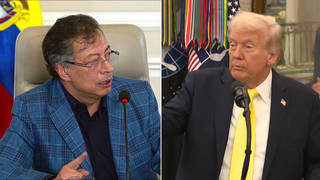
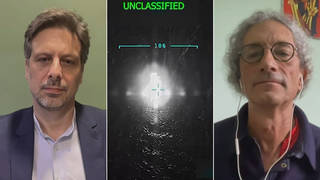
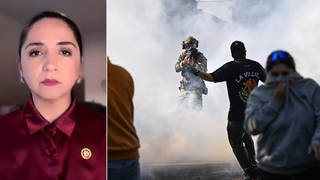





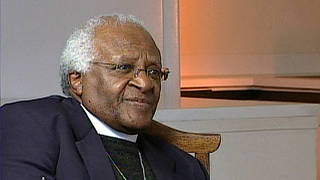
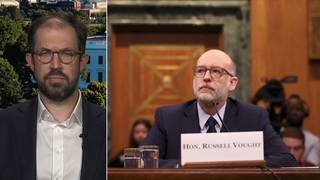
Media Options